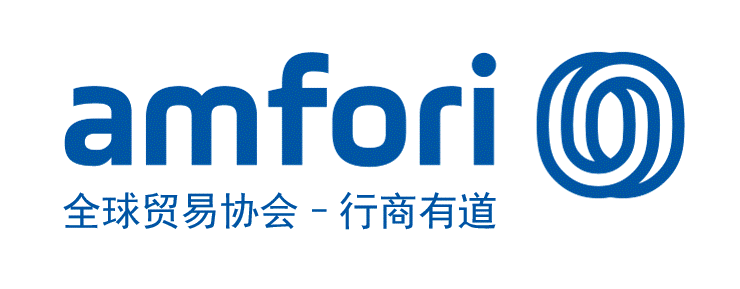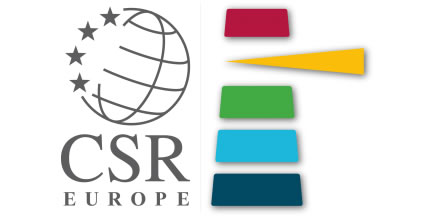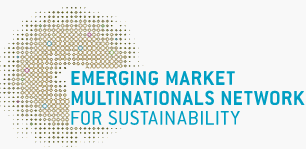London 2012 Summer Olympics: starts sustainability management in all aspects
2017-11-03China WTO Tribuneadmin0010
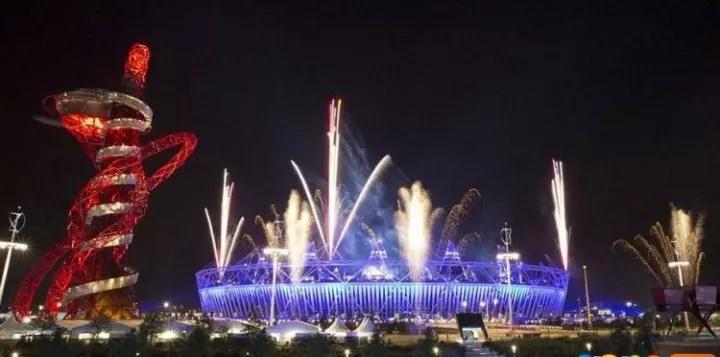
From the bid to the subsequent legacy management, sustainability is considered into every decision of London 2012, and these decisions are integrated into three important stages, namely preparation, operation and sustainable legacy, through organizing committee and mechanism. London 2012 Summer Olympics is not only the first truly sustainable Olympics in a sense,, but also spreads sustainable concept and methods to the subsequent large activities, having a positive influence on the development of sustainability management system around the world.
Sustainability management system
Early before 2008, London 2012 had begun to explore and set up a set of sustainability management system, and develop the set of system into certifies national and international standards. After years of practices, London Organizing Committee of the Olympic Games (LOCOG) and Olympic Delivery Authority (ODA), the two main organizers of London 2012, passed the BS 8901(British Standard for a Sustainable Event Management System) certification and won the ISO 20121 (Sustainable Events Management)
Principles and Goals
Focusing on principles, vision, broad stakeholder expectations, London 2012 set five prioritized themes of sustainability and specific goals, commitments, strategies and steps according to the five prioritized themes. (See Figure)
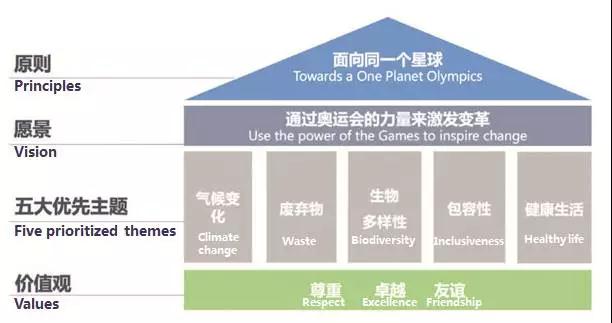
Governance and Operation
To ensure the achieving of commitment and sustainability goals submitted to International Olympic Committee (IOC) by London 2012, London 2012 built a sound governance system and operation mechanism. Olympic Council, as the highest decision-maker, is composed of British Olympic Minister, the mayor of London, Chairman of British Olympic Association (BOA) and Chairman of LOCOG. London Sustainability Working Group was responsible for the internal and external stakeholder engagement and followed up with sustainability plans.
As for sustainable organization and governance, the pioneering undertaking of London 2012 is to set up the Commission for a Sustainable London 2012 (the Commission). As external experts and the representatives of stakeholders, the Commission provided support and advice on the sustainability of the Olympics, which was an effective mode to support the implementation of plan of sustainability and mitigate the risks. In addition, the six “Sustainability Ambassadors” acted as a team of the London Olympic Games, they shared the challenges and opportunities of the sustainable Olympics they had observed from a personal perspective and provided suggestion and feedback to the host organization.
Based on the goals and commitments of the five prioritized themes, ODA and the LOCOG set up specific strategies and targets related to the areas which are of their responsibility. The Sustainability Working Group records the internal reporting process and sustainability project reports of each quarter focusing on the specific sustainability goals, for example, aiming at the performance of indicators, the updated risks, the feedback and complaints from stakeholders, the occurred accidents and improvements, etc. Meanwhile, the head of the Sustainability Working Group met with the Chairman of the Commission for a Sustainable London 2012 every month to discuss feedback from stakeholders and other important issues. In response to the progress of the target, the London Sustainability Working Group reported targets that would not be able to be accomplished according to plan and the problems encountered to Olympic Council through quarterly reporting.
Sustainable Management Practices
This section selects some of the most important prioritized themes on sustainability, and also acts to be an introduction of developed system management and the leading areas of IOC.
Carbon Emissions: a Prediction Model of “Reference Footprint”
By confirming a series of assumptions, LOCOG developed a new method to calculate the possible carbon emissions of the whole event in 2007, which is a forward-looking prediction model called the “Reference Footprint”. According to the model, the total carbon footprint of London 2012 is 3.4 million tons of carbon dioxide-equivalent. The emissions can be divided into three types – “own” “sharing” and “relevance”, including all the effects of construction, transport infrastructure and the audience. The “own” emission is the direct consequence of the Olympic Games. It is mainly related to the activities during the Olympics period or near the venue, such as the use of energy of the venue, transport services, temporary material supply and use, and it is the key area of emission reduction.
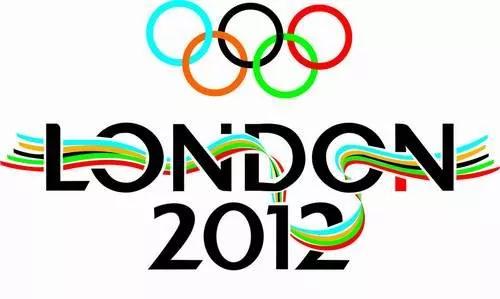
With the development of the preparatory work, London 2012 continued to improve the original “Reference Footprint”, saved carbon emissions according to the revised plan, drew a reduction scheme of higher accuracy, and managed carbon emissions by avoiding emissions, reducing emissions, and taking alternative and compensating measures.
Compared with the “Reference Footprint”, the final carbon footprint of the London 2012 is 3.3 million tons of carbon dioxide-equivalent, which is lower than the assessed amount of the early stage.
Waste Management: From Commitment, System and Technology to Public Participation
The goal of London 2012 is to ensure that the waste was minimized during the whole process from planning to legacy, and to maximize the reuse and recycling. Therefore, LOCOG issued the Zero Waste Games Vision.
LOCOG mainly adopted the centralized management approach to fulfill the obligation of waste and resource management. The committee defined the possible areas that may produce waste, and the solution was to avoid wasting or recycling according to the classification of the waste. At the same time, the London 2012 established strict regulations to the landfill and recycling, etc. which require to gain support of partners by making waste management plan, setting up guidelines and standards and indicating waste management in the procurement documents and contracts. As for the waste management technology, the sponsor organization of the London 2012 cooperated with professional institutions-WRAP and BREEAM and adopted the most advanced tools and methods of the industry.
During the Olympic Games, a large amount of waste came from food waste and the related packaging. The waste can be divided into three types: recycling, food and compostable packaging, non-recyclable waste. LOCOG required suppliers to print color coded icons on food and beverage packages and the icons should be corresponding to the bins. Meanwhile, LOCOG continued to carry out activities to enhance consciousness before the opening of the Olympics inside the field to encourage audience and athletes to participate in recycling.

Biodiversity Conservation
The key points of biodiversity conservation action during London 2012 were as follows. Firstly, reduce and mitigate the impact caused by the construction activities on existing species and habitats. Secondly, develop water and land habitats and increase open waters or grassland with rich wetland species in the Olympic Park area. In addition, protect sensitive species and habitats by making site environmental management plan. Finally, promote the awareness raising of biodiversity.
The improvement of the ecological environment of the Olympic Park is the most prominent. The organizer created a new habitat which covers an area of 45 hectares and an open space which covers an area of 102 hectares, including open wetlands, wide riparian and grassland, and this acts to be a model of ecological management of priority species and habitat, for example, using felled trees as much as possible during the logging period to build protective wall, providing new habitats for amphibious animal, reptiles, invertebrates and plants. The actions taken also included eradicating invasive species, such as the Japanese knotweed, giant ragweed, using provided nesting sites, finding ways of building green and brown roofs, integrating natural biological feature into architectural design, using the seeds collected in front of the Olympic Park site to build habitats, etc.

Sustainable purchasing
LOCOG issued the LOCOG Sustainable Sourcing Code in 2007 and released the Suppliers’ Sustainability Guide Package in 2011. In addition, LOCOG issued the Guidelines for Sustainability of Business and Public Activities in 2008.
Contract management is a core mode to ensure that the sponsors and business partners to meet the sustainability requirements. LOCOG Working Group on Sustainable Development plays the role of recommendation and validation in this process, providing tools and resources for purchasing manager, franchise operators and business partners to support the suppliers so that they can meet the sustainability requirement. The Working Group use Sedex (Supplier Ethical Data Exchange) System to monitor the conformity of the suppliers with LOCOG Sustainable Sourcing Code.
Revelation
The London 2012 can act as a reference for the upcoming Olympic Games or other large-scale activities, which could promote sustainability-related work with innovative thinking and work style with combination of the actual situation.
First, develop a sustainability plan from a more strategic perspective. In making specific sustainability plans, it is necessary to combine the short-term needs of the Olympic Games with the needs of the city and even the country's long-term development, and develop solutions which are more forward-looking and which can take both short-term and long-term development into account.
Second, mobilize and play the force of professionals in various industries. It is necessary to use innovative and efficient mechanisms to maximize the participation of professionals and make a joint contribution to the achievement of the goal of sustainability, whether from the perspective of professional technology, or from the consideration of the wisdom of management.
Third, provide maximum support to all stakeholders who are related to the achievement of the goal of sustainability. Olympic organizers need to provide a large amount of documents on management guidance and tools for internal project teams, suppliers, sponsors and other partners, while conducting comprehensive and adequate training for all staff and volunteers.
Fourth, design projects revolving around sustainable goals. The Olympic organizers should consider developing sustainability-related projects with unique characteristics. The projects can be products and creative services, such as the management and use of bike-sharing in Olympic venues, or the development of the projects of related brands.
Fifth, manage the sustainable heritage, especially the intellectual legacy, as early as possible. Since sustainable knowledge, experience and lessons can bring help to subsequent organizations only by accumulation, the Olympic organizers need to make overall plan and arrangement at the early stage of the projects in terms of intellectual legacy.
Sixth, educate the public about sustainability and spread ideas actively. Giving the public an understanding of the role that everyone plays in achieving sustainable goals will not only contribute to the achievement of sustainable goals, but will also be an important legacy of the Olympic Games in terms of sustainability awareness raising.
Best Practices
- The 100-year brand — Air Liquide also has a sense of juvenile
- Beijing Public Transportation Corporation: Developing green transportation to build a harmonious and livable capital
- CGN: Building a modern factory in barren deserts and developing a new win-win cooperation model along “Belt and Road”
Upcoming Event

All the materials on the site “Source: XXX (not from this site)” have been reprinted from other media. They do not imply the agreement by the site.
All the materials with “Source: CSR-China Website” are the copyright of CSR-China Website. None of them may be used in any form or by any means without permission from CSR-China Website.
GoldenBee Official WeChat
Copyright © Csr-china.net All Right Reserved.
京ICP备19010813号


